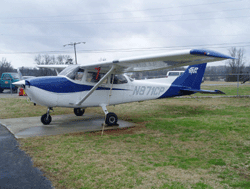What?
Flight control failures are a rare event in well maintained Redstone aircraft, but are usually catastrophic. Has your flight training or proficient training covered the consequences such events? Most of us have been exposed to emergencies such as loss of power and flaps, but what about an asymmetric flap extension or sudden retraction. The following is taken from Chapter 16 Emergencies.
An asymmetric “split” flap situation is one in which one flap deploys or retracts while the other remains in position. The problem is indicated by a pronounced roll toward the wing with the least flap deflection when wing flaps are extended/retracted. The roll encountered in a split flap situation is countered with opposite aileron. The yaw caused by the additional drag created by the extended flap will require substantial opposite rudder, resulting in a cross-control condition. Almost full aileron may be required to maintain a wings-level attitude, especially at the reduced airspeed necessary for approach and landing. The pilot therefore should not attempt to landwith a crosswind from the side of the deployed flap, because the additional roll control required to counteract the crosswind may not be available.The pilot must be aware of the difference in stall speeds between one wing and the other in a split flap situation. The wing with the retracted flap will stall considerably earlier than the wing with the deployed flap. This type of asymmetrical stall will result in an uncontrollable roll in the direction of the stalled (clean) wing. If altitude permits, a spin will result. The approach to landing with a split flap condition should be flown on! at a higher than normal airspeed. The pilot should not risk an asymmetric stall and subsequent loss of control by flaring excessively. Rather, the airplane should be flown onto the runway so that the touchdown occurs at an airspeed consistent with a safe margin above flaps-up stall speed.
And a final thought from a wise old pilot: when you touch a lever/knob don’t be in a rush to let go of it. If something bad happens, put it back to its original position!








